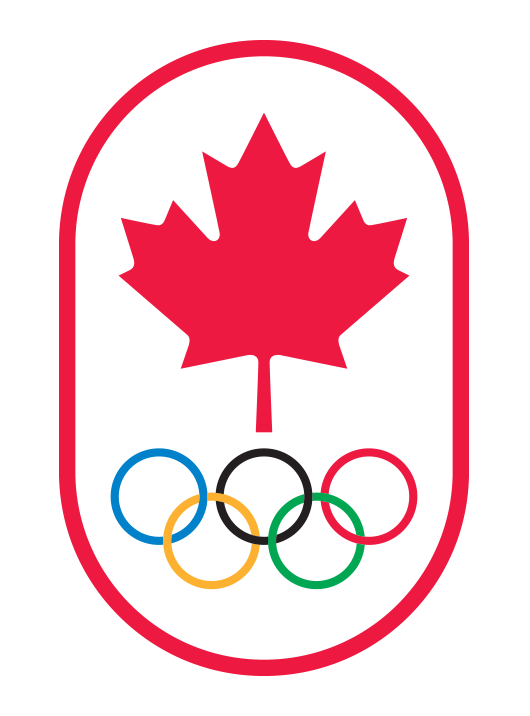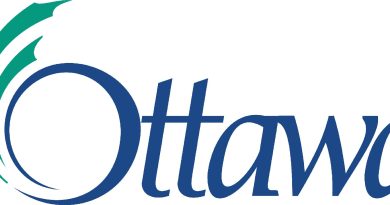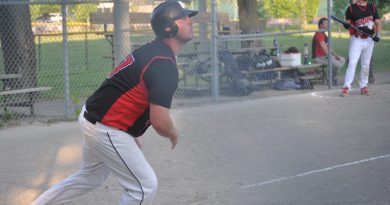The Most Forgotten Olympic Team in Canadian History
From the Other Side, Manotick Messenger
They are perhaps the most forgotten team in Canadian history.
In fact, they are so forgotten that they do not even have a name.
One of the only crumbs of information that exists on the 1904 Canadian lacrosse team that won a bronze medal at the St. Louis Olympics includes the names of the players.
Almighty Voice.
Black Eagle.
Black Hawk.
Flat Iron.
Half Moon.
Lightfoot.
Man Afraid Soap.
Night Hawk.
Rain in Face.
Red Jacket.
Snake Eater.
Spotted Tail.
Each player deserves his own paragraph as a Canadian Olympic medal winner. All we know about these men is their names.
The team is known only as the Mohawk Indians. Historians have determined that the team likely came from the Six Nations Reserve in Brantford, Ontario.
Canada won six medals at the 1904 Olympics, with four of them gold. The United States led the way with 78 gold medals and 238 overall medals. Germany, Cuba and Canada were all next with four gold medals. The Germans won 13 total medals, Cuba had nine, and Canada had six.
Although it was the third Olympiad of the modern era, it was the first in which Canada would compete as a nation.
Canada won the gold medal in the lacrosse tournament, with the Winnipeg Shamrocks, Canada’s national amateur champions, winning the tournament. They beat the St. Louis Amateur Athletic Association 8-2 in the final. The Mohawk Indians, who had tied St. Louis 2-2, were awarded the bronze medal. A fourth team, the Brooklyn Crescents, were scheduled to appear in the tournament, but they had been ruled ineligible for using a professional player in the spring of 1904.
The Mohawk Indians, in their only game, tied St. Louis 2-2. We do not know why St. Louis earned a berth to the final to play the Shamrocks, but it would be a two-game tournament and we suspect organizers wanted the home team in the final.
The story of the Mohawk Indians goes a little bit deeper than a list of names.
The Olympic Games have a rich history of notable native North American athletes competing and succeeding. Jim Thorpe, Billy Mills, and even Canadian hockey gold medalist Theo Fleury are on the long list of Indigenous Americans and Canadian to compete in the Olympics and become national heroes.
But there is something special about the Mohawk Indians.
They remain the only all-Indigenous team to ever represent Canada at an Olympics.
The Mohawk Indians were not the only native Canadians competing for Canada that year. In fact, 800m and 1500m runner Peter Deer, an Iroquois Indian who was a mechanic from Montreal, would become the first athlete in Canadian history to represent Canada in an international competition held outside of our country.
It is important to note, as well, that Canada had been represented in international lacrosse games before, but only in Canada. The first international game of lacrosse ever recorded took place at the Fort Wellington field in Prescott, as teams of white players from Prescott took on a visiting team of white players from Buffalo, NY in 1868.
Lacrosse made its second and final appearance as a medal sport in the Olympics in 1908, although it did come back as a demonstration sport in 1928, 1932 and 1948. In 1908, Canada would, for the first time in any sport, select a national team represented from coast to coast.
The 1908 Olympics were originally to be held in Rome, but the eruption of Mount Vesuvius in Naples in 1906 triggered a move to London for financial reasons. The Games were held at newly built White City Stadium.
Canada and Great Britain fielded the only two lacrosse teams in the Olympic event, as South Africa had dropped out of the competition. There was a large crowd for the final, as it was held immediately before the soccer final.
The Canadian team was represented by players from as far west as New Westminster, BC to the west, and Montreal to the east. The team featured Paddy Brennan, Gus Dillon and Henny Hoobin (Montreal Shamrocks), Ernie Hamilton and Clary MacKerrow (Montreal Lacrosse Club), Jack Broderick (Cornwall Lacrosse Club), Doc Campbell (Orangeville), Frank Dixon (St. Catharines Athletics), Richard Duckett, Tom Gorman (Ottawa Nationals) and George Rennie and Sandy Turnbull (New Westminster Salmonbellies).
The Canadians led the Brits 5-1 after one quarter and 6-2 at halftime, but the Brits came back in the second half and tied the score at 9-9. Canada would eventually win 14-10.
The 1908 Olympics did leave their mark on history, even today. The marathon was lengthened from its previous distance of 25 miles to its current distance of 26 miles, 385 yards (42.195 km). The change was made from 25 to 26 miles so that the race could begin at Windsor Castle, and then the distance was changed to its current length after a request that the race start under the palace’s nursery windows.
Although no Indigenous Canadians were selected to play for Canada’s Olympic lacrosse team, one native Canadian of note did compete. Tom Longboat, an Onandoga runner from the Six Nations Reserve in Brantford, was the world’s top marathon runner of his era. In the 1908 Olympics, he was one of several runners who collapsed during the race and did not finish. The following year, at a rematch held in Manhattan, Longboat would win. He would ultimately turn professional, barring him from any future Olympic Games.






